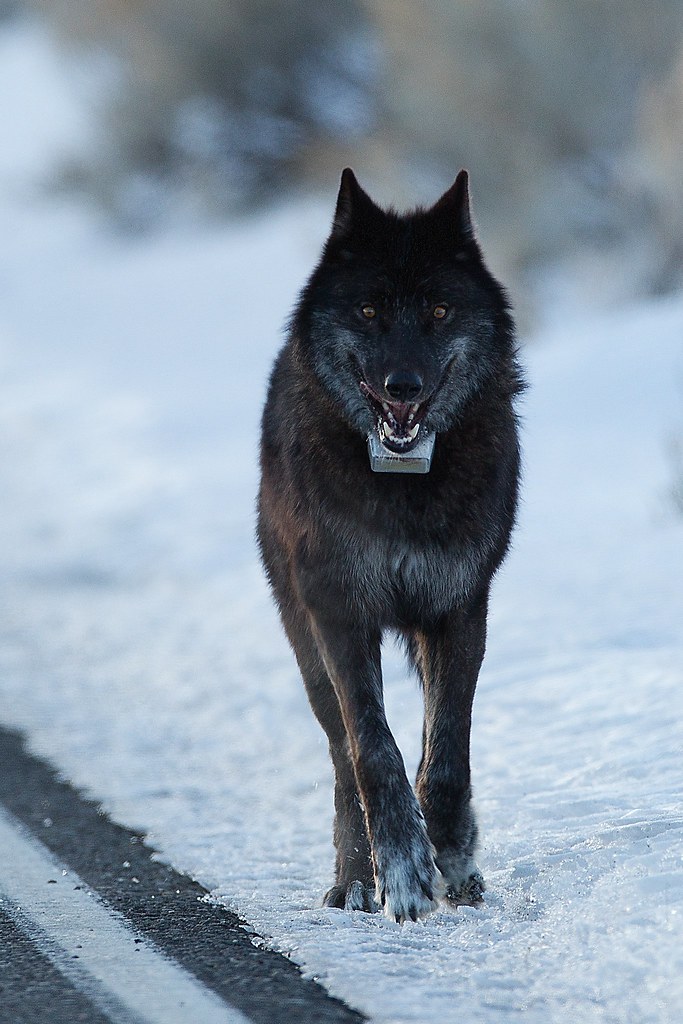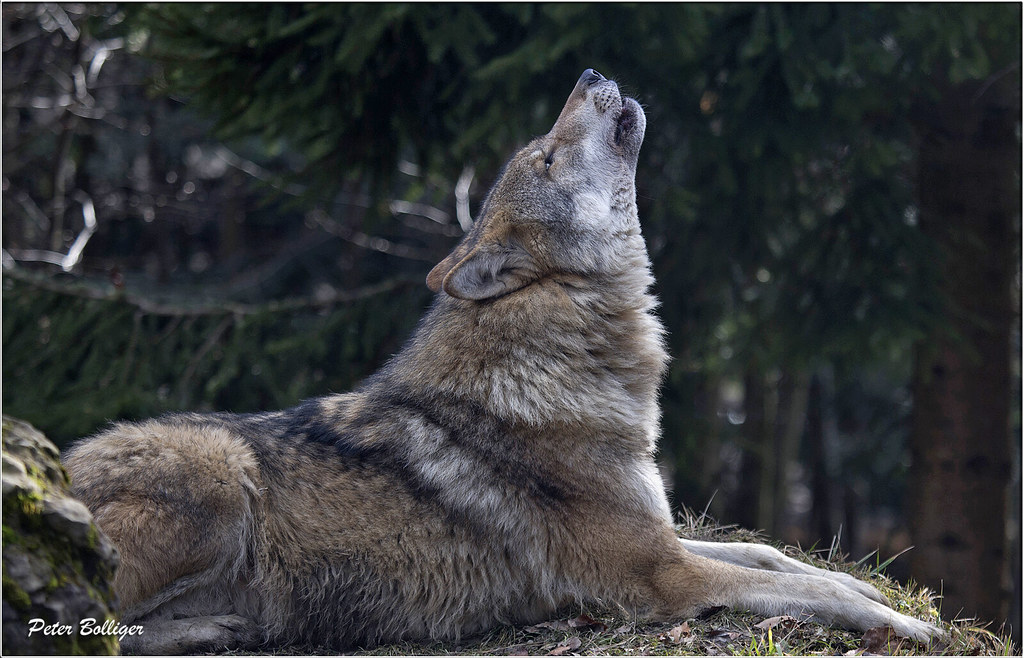Wednesday, December 31, 2014
Tuesday, December 30, 2014
#SnowWolf Family and Me, review: 'authentic and thrilling'
Gordon Buchanan is the heir apparent to David Attenborough - as long as he doesn’t end up on a polar bear’s plate
Snow Wolf Family and Me: Mon 29 Dec, BBC Two, 9.00pm Photo: Max Hug Williams
By
Michael Pilgrim
29 Dec 2014
The wolf is still an outsider. From Red Riding Hood to Jack London, it has
symbolised wilderness and raw, bloody survival. So if you want to try your
hand at proper wildlife filming, up close and wolf-breath personal, it has
to be Canis lupus arctos. Snow Wolf Family and Me (BBC Two) was a new
outing for heavily insured cameraman Gordon Buchanan, the third strand in a
series that’s done black bears in Minnesota and hungry polar bears. The
latter memorably showed Buchanan coming close to being a bear lunch.
Buchanan chose Ellesmere Island in Canada for its remoteness. You can’t even
get a Domino’s Pizza delivery there and the local wolves have never met a
human, although they obviously have a decent media agent and PR.
His method was hands-on, or possibly paws-on. Getting to know the wolf family
and winning their trust, though, proved slow. Empathy was expressed in usual
ways: wolves love licking cameras and apparently weeing on binoculars is a
sign of friendliness. The beasts also demonstrated that they were worryingly
clever, pulling at the insulated parts of the electric fence Buchanan had
erected round his camp.
The cutest sequence showed three pups practising howling. Each would
hesitatingly raise its snout skywards before essaying a mournful cry, a baby
Wolf of Wail Street.
Wildlife shows constantly seek new thrills, greater authenticity and deeper
understanding. Buchanan succeeded on all these fronts. This wasn’t reality
TV play-acting. Wolves don’t misbehave for the camera, they just misbehave
full-time. Buchanan was in unconfected danger, visibly unnerved by the
presence of a fully grown killing machine circling him with its tummy
rumbling.
source
New Illinois Laws affect #Wolves within State
Posted: Monday, December 29, 2014
Charles Stanley
The Times staff will be investigating new Illinois laws taking effect Jan. 1, 2015. Today, reporter
Charles Stanley looks at a new law protecting species returning to Illinois.
Mountain lions, gray wolves and American
black bears — now returning in limited numbers to Illinois — have been
added to the state’s list of protected species. “Wolves, mountain lions and black bears
have been absent from Illinois for more than 150 years,” said Illinois
Department of Natural Resources Director Marc Miller in a statement. “As the populations of these animals
continue to grow, we expect to see occasional individuals dispersing
from their current ranges into Illinois,” he said.
But the protection legislation, Public
Act 98-1033, also spells out conditions that allow landowners to kill
the animals if they are causing an immediate threat of physical harm or
death to a person, livestock, domestic animals or harm to structures or
other property.
The law allows landowners to kill a black bear or mountain lion if there is an imminent threat to lives and property. The law also allows landowners to apply for a nuisance permit to remove an animal that is not an immediate threat.
The gray wolf already receives legal
protection in Illinois from both the U.S. and Illinois Endangered
Species Acts. In these instances, endangered species law will be
followed. Due to its federal protection, rules for
killing a gray wolf south of Interstate 80 are more stringent. South of
Interstate 80, gray wolves may not be killed unless they present an
imminent threat to people. Any other killing requires state and federal
permits.
Large predator animals Question & Answer
Q. Is Illinois encouraging the return of large predators?
A. The Illinois Department of Natural
Resources is not actively working to restore gray wolves, American black
bears or mountain lions to Illinois. However, IDNR recognizes that
occasional individual animals are likely to make their way here. A
month-long visit to northern Illinois by a black bear last June
demonstrated the benefits of cooperation among state and local
government entities in monitoring the bear, but allowing it to remain a
wild animal. Public Act 98-1033 is a first necessary step that allows
the department to develop formal rules and protocols to manage these
species.
Q. What will IDNR do to manage wolves, bears and mountain lions?
A. IDNR biologists and the Illinois
Conservation Police are working together to develop protocols for
addressing interactions between people and wolves, bears and mountain
lions. Conservation Police will share this information with local law
enforcement agencies, the likely first-responders in the event of a
sighting or nuisance call. Currently, Illinois Conservation Police
officers are allowing these animals to go on their way unless they pose a
threat.
Q. What are the chances of populations of wolves, black bears and mountain lions becoming established in Illinois?
A. Re-colonization by these species is
possible, although Illinois has relatively little suitable habitat in
large enough blocks to support these animals. According to habitat
models, only about 14.7 percent of Illinois’ area is suitable for black
bears, 6.6 percent for mountain lions and 14 percent for gray wolves.
Q. What can Illinois residents do to be prepared for encounters with these species?
A. Property owners can avoid encounters
with wildlife by securing potential food sources, including pet food,
barbecue grills, trash and other sources. Bird feeders can be taken down
temporarily in the event of a local sighting.
To learn more about living with wildlife in Illinois visit web.extension.illinois.edu/wildlife/.
Dayton unsure of Minnesota's next step on #wolves
Associated Press, Associated Press
December 29, 2014
Dayton says he's unsure how active Minnesota would be in any appeal of the federal judge's pre-Christmas decision, which reinstated federal protection for the species in Minnesota, Michigan and Wisconsin. It's halted the hunt that had gone on for two years to manage the wolf population.
He said Monday he planned to meet later in the day with DNR Commissioner Tom Landwehr about next steps.
The governor says the DNR needs power to manage the wolf population so the animal doesn't pose too great a threat to people, other wildlife and livestock.
source
Organized #coyote and #wolf hunt planned in Sanders County, MT
HOPD
Gray wolf
12 hours ago • VINCE DEVLIN
Missoulian
TROUT CREEK -- One of the organizers
of the first Great Montana Coyote and Wolf Hunt in Sanders County says
the event -- scheduled for Jan. 16-18 -- took shape after local hunters
noted a lack of big game in the mountains this hunting season. “Deer,
elk and moose numbers are going downhill, and (bighorn) sheep are way
down,” John Harris said Monday. “Between the mountain lion population
blowing up and the number of wolves -- hunters noticed a lack of game up
in the mountains this year. There’s a lot more in the valley floors.”
The hunt, Harris said, is a way to “get sportsmen out and about.” “We
checked with (Montana Fish, Wildlife and Parks) to make sure we were
abiding by all laws,” Harris said. “They do this in eastern Montana all
over the place, and they have them in Idaho and Wyoming, too.”
Harris said response to the hunt has been “really good, and we’ve had a few negative comments.”
Some
conservation groups oppose such organized hunts. WildEarth Guardians
calls them “wildlife killing contests” and says they “give ethical
hunters a bad name and serve no legitimate management purpose.”
Harris
said all prizes awarded will be through random drawings and will not be
associated with numbers, weights or colors of predators killed. A
notation on a flier promoting the event that says that in addition to
random drawings, prizes will be be awarded based on sizes and colors is
wrong, he added. “The way I understand it, you can’t pay
for a wolf or coyote to be brought in,” Harris said. “All the prizes
will be from random drawings, whether you’re hunting or trapping, and
whether you get one or not. It’s a way to get people out in the woods
for a fun weekend.”
Organizers will weigh and measure all predators turned in during the contest.
Properly
licensed hunters and trappers will pay $5 to participate in the Sanders
County predator hunt. All entry fees will be returned in the form of
prizes.
Registration is Friday, Jan. 16, at 7 p.m. at the
Lakeside Resort and Motel in Trout Creek. Any coyotes or wolves taken
Saturday and Sunday, Jan. 17 and 18, must be submitted to event
officials by 6 p.m. each day.
All Montana fish and wildlife laws and regulations must be followed by participants, according to the rules.
Breaking News: #Echo, the Grand Canyon Wolf has likely been gunned down in Utah

  Picture of Echo, the Grand Canyon Wolf |
It's what we feared the most. Echo, the wandering wolf who became a worldwide sensation after showing up at the Grand Canyon this fall, has likely been gunned down in Utah.
Please help us stop this slaughter with a contribution to our Wolf Defense Fund.
Here's what we know: State wildlife officials have confirmed that a 3-year-old female wolf with a collar from Wyoming was shot Sunday night by a hunter outside Beaver, Utah -- about 150 miles north of the Grand Canyon. Echo is the only Northern Rockies gray wolf that has been confirmed this far south, and DNA evidence will most likely show that she's the victim.
Once again we have to mourn a dead wolf. Once again we see this same horrific pattern. It's normal for younger wolves to leave their pack and set off looking for a new mate and new territory. But again and again -- in Colorado and Iowa, in Washington and now Utah -- these wolves have been gunned down in horrific cases of malice and mistaken identity.
Smart as they are, wolves don't read border signs, and they can't tell an ignorant human with a rifle that they aren't coyotes. The result is another dead wolf to add to the 640-plus already killed this year by guns, traps and poisons.
The wolf haters, no doubt, are delighted with the latest killing and are determined to keep this bloody campaign going. They have influential friends like Utah's own Congressman Rob Bishop, the powerful new head of the House Natural Resources Committee, who has vowed to end protection for wolves from coast to coast -- making what happened near Beaver neither illegal nor rare. The government of Utah has even spent $800,000 on lobbyists to strip protection from wolves so they can be freely killed in the state. They don't want to learn to live peacefully with wolves. They want to destroy them.
This is why we have our Wolf Defense Fund, and it's why the Center's lawyers, scientists and activists are in court, Congress and the streets every day fighting for wolves. We also have a generous wolf lover who has agreed to triple any donations to the Wolf Defense Fund with a 2-to-1 match. Please support our work to save wolves from those who want to destroy them.
There are plenty of other wolves out there that need our help. Sadly there will only be one Echo, the first wolf to hear her howls ring through the Grand Canyon in more than 70 years. If she has indeed been gunned down, we won't forget her, and our response to her death -- and to the death of any other -- is to work like hell so it never happens again. All wolves deserve to the chance to to roam freely and survive.
Help us see that they do.
For the wolves,
 |
|
Monday, December 29, 2014
Wildlife officials: Young female wolf spotted, killed in Utah's Beaver County
FILE
- This image provided by Yellowstone National Park shows a wolf walking
through the snow in Yellowstone National Park in Wyoming. Two men in
Beaver County shot an animal attacking a cow that has since been
confirmed as a young female wolf. Wolf sightings are becoming
increasingly common, but there is no evidence a pack has been
established in the state. Yellowstone National Park, File, Associated Press
SALT LAKE CITY — State wildlife officials have
confirmed that a young female wolf was shot and killed in Beaver County,
the first documented killing of a wolf in Utah in several years.The men were hunting coyotes when they shot and killed the animal Sunday night near the south end of the Tushar Mountains.
They found a collar on it, and wildlife officials said the collar was first attached to the animal for identification and tracking purposes in January 2014 in Cody, Wyoming. The northern gray wolf was about 3 years old, and officials are terming the killing a case a mistaken identity.
The Utah Division of Wildlife Resources said reports of wolf sightings are on the rise in Utah, but biologists have so far been unable to confirm if there are any breeding pairs or an actual pack.
In 2010, two wolves were killed after attacking Utah livestock. Most of the sightings have been in counties that border Idaho and Wyoming.
"I think it was very sad a wolf was killed," said Kirk Robinson with Western Wildlife Conservancy. "This is suspect."
Robinson blamed the shooting on the state's coyote bounty, in which hunters can collect cash for killing the predators.
In Utah, ranchers may shoot wolves, but only in an area north of I-80 and east of I-84 to the Wyoming and Idaho lines. The animal is protected under the Endangered Species Act, although there has been a concerted campaign by ranchers and others to get it removed altogether from being listed.
In November, the U.S. Fish and Wildlife Service authorities confirmed that a female northern Rockies gray wolf was roaming the North Kaibab National Forest near the North Rim of the Grand Canyon.
According to wildlife officials, the first modern wolf confirmed in Utah after the species was exterminated from the state was captured on Nov. 30, 2002. It was a collared animal from Yellowstone National Park, and it was returned to the park.
Since then, there have been scattered reports of wolves making short trips into Utah from Wyoming or Idaho.
Although wolves have failed to take up permanent residency in the state, Utah lawmakers have not taken any chances of a probable return and want federal restrictions lifted.
The state has spent $800,000 to get the animal delisted, hiring a lobbyist to work politicians in Washington, D.C., and bureaucrats with the U.S. Department of Interior.
source
Editorial: Court restores protection vital to #wolves in Wisconsin
Melissa Tedrowe
December 28, 2014
Wisconsin’s third wolf hunt recently ended, with a body count of 154
wolves—a reduction from the 250 wolves taken last year, but still a
significant dent in our state’s besieged population. Since federal
protections for this species were rescinded in 2012, the Wisconsin
Department of Natural Resources has overreached and allowed an inhumane
and reckless trapping and trophy-hunting program to be implemented.Thankfully, a federal district court just ruled that state management is flawed and hindering wolf recovery, and sport hunting and trapping of wolves in the Great Lakes region must end. Wolves in Michigan, Minnesota and Wisconsin once again are federally protected—restoring protections that wolves and people lived with for nearly four decades.
In just 2½ years, trophy hunters and trappers killed more than 1,500 Great Lakes wolves—principally in Wisconsin and Minnesota—under hostile state management programs that encouraged dramatic population reductions. This new federal court decision recognized that state wildlife managers have not been responsibly handling their authority, and their “virtually unregulated killing” plans have impeded the recovery of wolf populations.
Wisconsin stands apart in managing its wolf population with exceptionally unsporting and barbaric methods, including leghold traps, cable snares, baiting, electronic calls, and packs of dogs—with hounding of wolves so out of the realm of responsible action that it has drawn condemnation around the nation.
Since the state took over management, authorities have intentionally driven down the size of the population by allowing the killing of so many wolves that packs have been crippled or even wiped out. During the last three hunting seasons, more than 520 wolves were killed—and nearly 70 percent of them were taken with cruel and indiscriminate leghold traps.
For several years now, state wolf management has been based entirely on fear and rhetoric, rather than science and conservation. The plain truth is that wolves pose no legitimate danger to people. Wolf-caused mortality of livestock in our state is minimal and can be managed through nonlethal measures. In fact, a recent peer-reviewed study out of Washington State University, which used more than 25 years of data, demonstrated that lethal control of depredating wolves does not work. Such a measure may result in a greater loss of livestock by disrupting pack social relationships and allowing more surviving wolves to breed. Random killing of wolves, ironically, may result in more problems for farmers and ranchers.
Our DNR’s 2014 survey of nearly 9,000 residents revealed that a vast majority believe that wolves “balance nature” and should not be “harvested” for their fur by trappers. It is time now to heed the wishes of Wisconsinites and this latest federal court ruling by protecting wolves from further trophy hunts and finding the right balance on the issue of wolf management.
Melissa Tedrowe is Wisconsin’s state director of The Humane Society of the United States.
source
Sunday, December 28, 2014
Meeting a wild wolf pack--A new BBC film
23 December 2014
Ellesmere Island is one of the most remote and beautiful places on Earth. This is the only place in the world where wolves are naive to man and have no fear. It allowed wildlife cameraman Gordon Buchanan and scientists an unparalleled opportunity to form bonds with a wild wolf family, revealing the remarkable story of their relationships and behaviour.
Here series producer Ted Oakes talks about some of the highlights and challenges of being accepted by a wild wolf pack.
Snow Wolf Family and Me will be broadcast on 29th and 30th December 2014 at 21:00 on BBC Two.
Music by Jean-Marc Petsas. Photofilm produced by Dualtagh Herr.
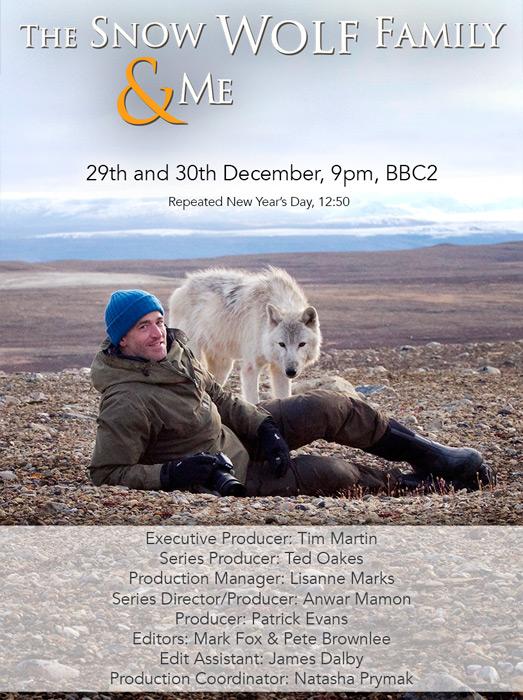
source
Field Notes: Life Among Isle Royale Wolves
Climate Confidential
Overview
Nine wolves, two men, and a drive to upend the conventions of wilderness
protection to save an isolated group of nature’s most elusive
predators. As we explore the themes of limits and borders this month, we
talk to two wolf ecologists who study the ways that isolation can
both sustain and limit a predator-prey ecosystem.
Published December 20, 2014
BY MARY CATHERINE O’CONNOR
Isle Royale rises from the icy waters of Lake Superior about 20 miles south of Ontario, Canada. This far north, temperatures often drop below 15 degrees Fahrenheit during winter. Since the late 1940s, gray wolves have carved out a niche on this narrow strip of protected wilderness, feeding mostly on moose.
The Isle Royale wolf population tends to fluctuate as moose numbers rise and fall. But the most recent count, last winter, found only nine wolves surviving on the island — close to an all-time low — and scientists say they saw no evidence of successful breeding this summer. At its peak, Isle Royale supported a population of at least 50 wolves. Moose, meanwhile, have doubled their numbers to 970 individuals in just three years.
Working the Island
Each winter, Peterson climbs into a small seaplane in Ely, Minnesota, with Vucetich, who joined the wolf-moose research project in the early 1990s. Pilot Don Glaser flies the two scientists to the island, which is also a national park. For two months, the three men live in a small lodge and spend many days in flight, chasing the radio signal from a collared wolf that can lead them to sites where wolves and moose interact.
In the summer, Peterson and Vucetich head to opposite ends of the island to study its diverse plants and mammals, including snowshoe hares and beavers. When they find a moose or wolf carcass, they perform a necropsy to discern the cause of death. But mostly, Peterson and Vucetich observe and document life among some of nature’s most elusive large carnivores.
“We spend an incredible amount of time just getting into position to get a few seconds of observation,” Peterson said. “The number of hours during any year that we actually spend watching wolves, you can count those on one hand.”
In the late 1950s and early 1960s, wolves could cross between Isle Royale and Canada by way of seasonal ice bridges, which formed during three out of the first four winters of the Michigan Tech study. But rising temperatures have made ice bridges increasingly rare. In the past two decades, only three winters have been cold enough for ice bridges to form. And only one of those seasonal links, in 1997, brought a new wolf to the island: a grizzled male that Peterson and Vucetich call the Old Grey Guy.
The Old Grey Guy may have saved the Isle Royale wolves from extinction. By the time he arrived, the island population had dropped to around 24 individuals and every wolf skeleton the researchers examined showed deformities in the spine. The population had fallen to 14 wolves by the time the first of Old Grey Guy’s progeny were born. But even a team of leading geneticists couldn’t pinpoint the root of the problem.
“We didn’t know what the problem was at that time,” Peterson said. But more wolf pups began to survive after the Old Grey Guy came into the picture, and Peterson’s team was able to prove that the population had been suffering from genetic depression. Simply put, without newcomers like the Old Grey Guy arriving from the mainland, the wolves of Isle Royale face a limited selection of mates, and they become inbred.
The Case for New Blood
The Old Grey Guy was the last wolf to migrate to Isle Royale from the outside world. If wolves are to persist on Isle Royale, Peterson and Vucetich say a genetic rescue will be necessary. In other words, they want to bring fresh DNA to the breeding mix by importing wolves from mainland populations.
• • •
Other scientists oppose the idea of meddling with a population that offers such a unique opportunity to observe and analyze trends in a natural laboratory over the long term. “The best thing we can do, for scientific purposes, is to just watch the situation,” former Isle Royale wolf ecologist Dave Mech told me in an interview for Al Jazeera America last spring. He’s concerned that monkeying with the wolf population would taint the scientific record, which has thus far been based only on observing the species.
For now, the National Park Service is taking a wait-and-see approach. In April, Isle Royale superintendent Phyllis Green announced that the park service would be taking no actions in the near term to perform genetic rescue and that it would instead conduct a three-year environmental impact study to ascertain not only the impacts of climate change on the island’s wolves, but also its entire ecosystem. The study was supposed to begin this fall, but a lack of funding meant the study will not commence until 2015 at the earliest.
When Science and Advocacy Meet
When asked if he considers himself an advocate, Peterson says “We’re advocates for science and education, for sure.” What about for wolves? “Through science and education, yes. There are sometimes abusive decisions made — abusive to the conservation of wildlife. And it’s important to study those issues carefully and, where appropriate, make noise about them.”
Vucetich, however, is undeterred. He said controversy like this comes with the job. “I think there might be some self-selection early on among wolf ecologists, figuring out what their tolerance is in getting engaged [in social or policy issues].”
source
This Climate Confidential story was funded directly by readers like you.
It's free to read because it was shared by the author. Back Climate Confidential, and your funding directly supports their future work — You can impact the stories that get told.Saturday, December 27, 2014
Words on Behalf of the #Wolf
Language is a powerful and essential tool used by Homo sapiens throughout history in order to
convey meaning, purpose, and intent. The step up from pictographs to a rich,
flexible means of communication advanced comprehension of a shared idea among
our human family. However, in order to move understanding to its fullest
potential, we developed a means of descriptivism that echoed our past use of
pictures. In short, we painted our sentences with simile, metaphor and other
figures of speech in order to move expression from a range of images to a more
accurate vision of what we wished to convey.
This method of expression works for the most part, but as
with any set of tools used inappropriately, a less than desirous effect occurs.
Take, for instance, a simple noun, such as “dog,” that is used in any number of
ways to emphasize and project certain qualities of this noble beast upon other
species or events. I was “dog-tired,” or I was “dogged” relentlessly for an
answer,” suggests two entirely different aspects of an otherwise inert subject.
And therein lies the danger.
Over time, with accepted repetition, labeling and
categorization can occur that results in a detrimental and false projection of
the once innocuous word, term, or subject. Look at what we’ve done to the pig;
to say one is “piggish” denotes a selfish, rapacious nature, not only about the
person in question, but the animal, as well. What about the jackass? Calling
someone an “ass” is not a very nice sentiment at all, even though I’ve petted
some very nice donkeys.
But what concerns me today is how effectively our language has
demonized the wolf. The Oxford Dictionary states that we
use “wolf” in “similes and metaphors to refer to a rapacious, ferocious, or voracious person or thing.” The movie, The
Wolf of Wall Street, exposes an aggressive, ambitious character that is
uninhibited by morals or conscience. A person who is financially bereft can experience
“the wolves at the door,” or those who value money more than the plight of the
person and his or her family. Those are certainly not very good people knocking
at the door.
I’ve only begun with comparisons;
here are more. A seducer of men or women for sexual pleasure only is also known
as a wolf. Ever heard of wolf notes? As a former musician, I can
assure you that you do not want to hear these out of tune sounds that are akin
to nails on a chalkboard. Know someone with bad table manners? Chances are the
person wolfs down their food with
utmost greed.
Then there are the typical phrases
and idioms. One cries wolf if he or
she is more after attention than help. If you’re a hard worker, chances are you
earn enough money to keep the wolf from
the door. Having the wolf by the ears
places one in a very precarious position. If you throw someone to the wolves, then you’ve abandoned him or her to
the worst wiles of the world. And of course, a wolf in sheep’s clothing is never to be trusted, as they are
devious and up to no good.
In American slang, to cut one’s wolf loose means to go on a
drinking binge. That’s not exactly a model way to spend one’s evening. To have a wolf in one’s belly is akin to
overwhelming avarice or appetite. And then there is the worst example, in my
opinion, used by the media to describe terrorists: the lone wolf.
As a naturalist and advocate for
wolves, this problem has perplexed me for some time. Our language is filled
with word associations that, often without thought, ultimately further the
declining reputation of a particular animal. For the wolf, this misuse of language
has led to furthering myths about these canines, along with demeaning their real
value within the environment. It’s hard enough to try to save a species when
you’re working against greedy ranchers, irresponsible hunters, and the
politicians the former two puppeteer, but to try to change clichés and idioms
that are embedded within our language is exhausting.
What can you do as a person who
speaks for the wolves of the world? You can correct a person’s casual misuse of
the word, wolf, and its collective, wolves, by explaining how his or her
language is not only maligning these animals, but that they are helping to
further the destruction of an apex predator. Wouldn’t it be a better world
where words do no harm? That’s an idealistic question, but the answer is one
that we all can make a worthy goal. Even if we cannot change all the bad in the
world, we can certainly change ourselves and our little corner of this
beautiful earth. And that will definitely help the beautiful, essential wolf and
their families in their bid for continuation.
Lin Kerns
December 27, 2014
Foxes, Coyotes and Wolves Lecture Today
Posted: Friday, December 26, 2014
By Khai Hoang
HOLLISTER — The red
wolf, after decades of being gone from eastern North Carolina, is
making a comeback, according to Sandra Fambrough, park ranger at Medoc
Mountain State Park, who is hosting a lesson on what the resurgence
means.
Taking place at 2 p.m. Saturday
at Medoc, 1541 Medoc State Park Road in Hollister, Fambrough said she
will aid in educating people through her program. She said this is the
first time the “Foxes, Coyotes and Wolves, oh my!” existed, and it was
created to teach several topics, such as the differences and
similarities between foxes, coyotes and wolves. Fambrough added she will
also explain why red wolves are a benefit to the area.
For example, she said with the
lack of predators, such as the red wolf, smaller creatures like the
mouse, rabbit or rat are left unchecked and become too populous. These
smaller animals may harbor several diseases detrimental to humans,
Fambrough added. “Every animal, big or small, has an important part to fill that niche in the environment,” she said.
Though she said she’s had people
encounter the red wolf return with fear, red wolves also hunt the more
dangerous animals in the area, such as coyotes.
The lesson will also include what
landowners can expect when red wolves start being reintroduced more and
more, but for now, they are in the wild only in Dare, Washington,
Terrell, Hite and Beaufort counties. “And though we are not near those
counties, if the red wolf is able to make a comeback, it’ll eventually
be in Halifax County,” she said.
Fambrough encouraged families to
come out Saturday afternoon for an informative indoor lesson on what the
red wolf has in store for North Carolina. People can expect several
pictures and animal pelts to experience during the lesson. “To me, it’s a very beneficial animal to have here,” she said.
Friday, December 26, 2014
Thursday, December 25, 2014
WI’s Wolves are Finally Free from Reckless Trophy Hunts: It’s time to examine the facts and to dispell the myths about wolves…
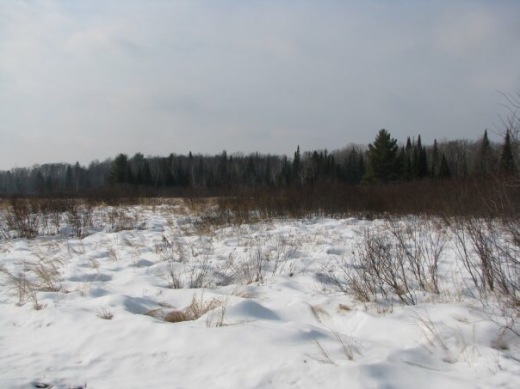
Winter landscape Douglas county WI (Photograph by Rachel Tilseth)
Federal Judge Howell ordered Great Lakes wolves back on the Endangered Species Read previous blog here: http://wolvesofdouglascountywisconsin.com/2014/12/20/recreational-hunting-of-great-lakes-wolves-is-stopped-wolves-are-back-on-the-federal-endangered-species-list-immediately/
It’s time to take down the fences, start a dialog, and bring back WI’s reputation as an environmental leader.

Aldo Leopold and land ethic, A Sand County Almanac

Wolves have a important role in the health of earth’s ecosystems.
http://youtu.be/ysa5OBhXz-Q. How Wolves Change Rivers
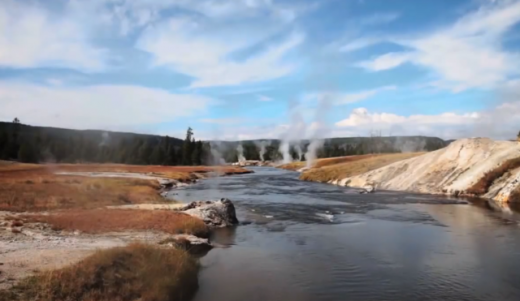
Human hunting is the leading cause in deer mortality not wolves…
Study sheds light on top causes of deer mortality
“…How much higher is the deer kill from human hunting than the other four causes? Answer: More than four times higher than any other source. In fact, human hunting was responsible for about twice as much deer mortality in northern Wisconsin than the other four causes combined. The rates of mortality were human hunting 43%, starvation 9%, coyote 7%, wolf 6% and roadkill 6%. If you added poaching (8%) the human kill gets even more significant.” http://www.jsonline.com/sports/outdoors/study-sheds-light-on-top-causes-of-deer-mortality-b99190938z1-241992741.html?ipad=y
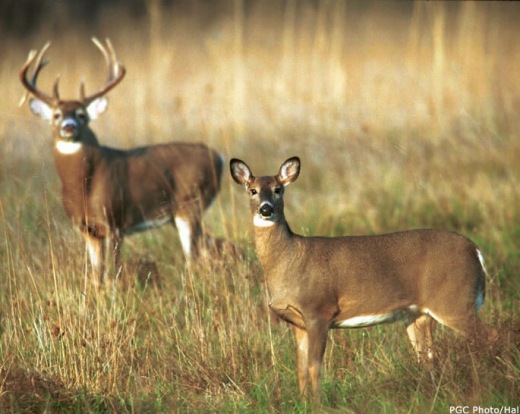
Depredations by wolves on livestock are going down…
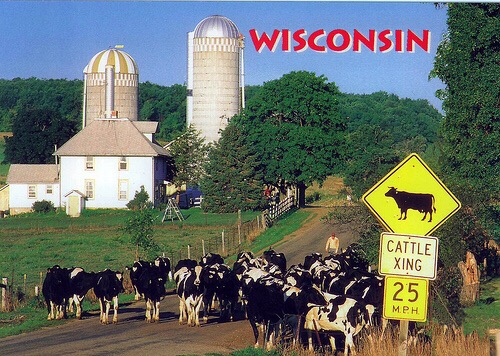
2013 There were 19 confirmed wolf depredation with 9 farms/ranches considered chronic which could mean human neglect or not practicing methods in predator friendly ranching and farming methods. http://dnr.wi.gov/topic/wildlifehabitat/wolf/documents/2013_WolfDepredationReport.pdf
Has WI lost its moral compass? Fridge hunters use unethical methods to hunt wolves in WI.
Out of all the states that hunt wolves, only Wisconsin allows hound hunters to use unleashed packs of dogs to hunt wolves. Wisconsin, quite literally, throws “dogs to the wolves.”
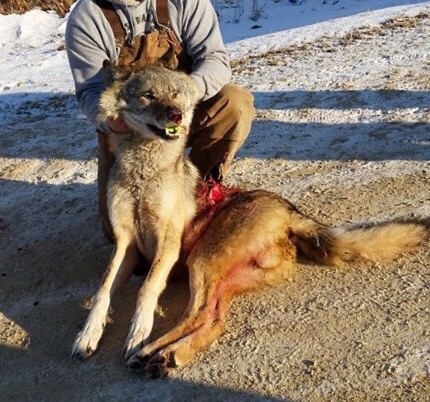
Hound hunters traditionally train their dogs to focus on specific prey by releasing their dogs to surround, attack and terrorize a prey animal…At this point it remains disturbingly unclear as to how hound hunters will train their dogs to pursue wolves instead of other animals—will it be by capturing wolves and allowing their dogs to attack them in barrels and pens? How isn’t this worse than illegal dog fighting? http://wolvesofdouglascountywisconsin.com/2014/08/13/wodcw-faq-sheet-on-wolf-hound-hunting/
A question of why would anyone want to harm “brother wolf.”
“I feel that the only reason a person would hunt a wolf is bragging rights,” said Nigaanigiizhig (Jim St. Arnold), Ojibwe elder and the Traditional Environmental Knowledge (TEK) coordinator for the Great Lakes Indian Fish and Wildlife Commission in Odanah, Wisconsin. “They can’t eat the meat of a wolf, they can only have a trophy.” Read more at http://indiancountrytodaymedianetwork.com/2014/12/05/wisconsin-closes-wolf-hunt-three-months-early-quota-exceeded-158150
Why does man hunt wolves?
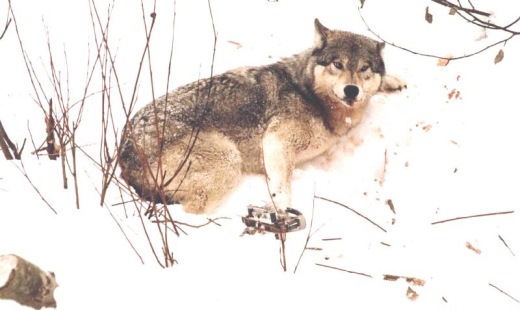
“In Wisconsin about 80 percent of the wolves taken are by trapping. There is no limit on the number of traps set, but a trapper can only kill one wolf.”
Read more at http://indiancountrytodaymedianetwork.com/2014/12/05/wisconsin-closes-wolf-hunt-three-months-early-quota-exceeded-158150
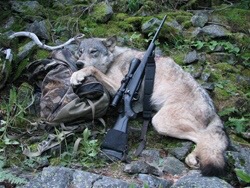
Can Dogs Teach Us Why Some People Kill Wolves? “I have commented several times since starting this blog on the absurdity of “saving” an animal from extinction in order to start killing it again. That is what is being done with the gray wolf in the Northern Rockies and Western Great Lakes and it is making a deadly mockery of the Endangered Species Act….Of the 6 states where wolves have been delisted, Idaho explicitly wants to reduce its wolf population to the minimum number set in the species recovery plan prepared when wolves were given protection or fewer—down to zero. Montana and Wyoming would also rather kill than nurture. Wisconsin wanted to add a wrinkle of hunting wolves with hounds. Minnesota seems largely to want to be part of the killing in order to avert conflicts between wolves and humans. Only Michigan has resisted pressure from wolf haters to legitimize their fear with a hunting season.” http://www.psychologytoday.com/blog/dogs-best-friend/201211/can-dogs-teach-us-why-some-people-kill-wolves
Great Lakes wolves are now protected under the Endangered Species Act and even if that that decision is challenged it will be a few years.
Let’s hope in the meantime wolf recovery can make gains in educating the general public about the value of wolves role on our ecosystems…
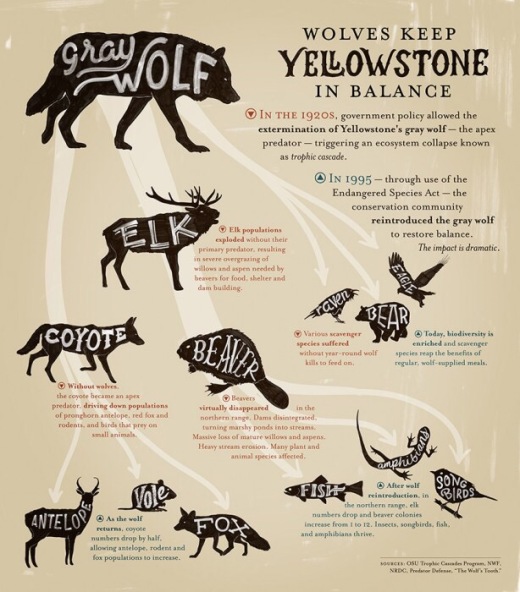
source
Subscribe to:
Comments (Atom)






